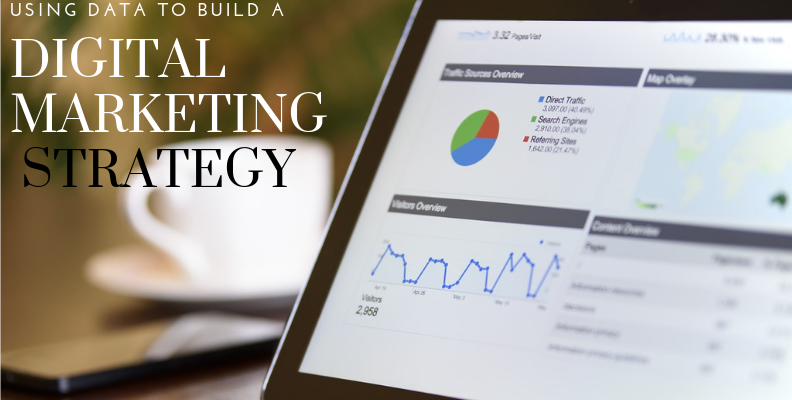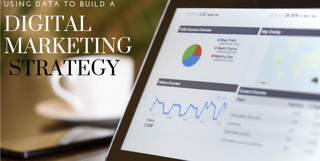
In the past, many believed that successful marketing campaigns relied heavily on great creative - strategy, imagery, and just overall execution - while research and data took a back seat. As we move further into a digital world where data reins king in so many areas of business, it has become widely accepted that even creative areas of a business like marketing can and should lean more heavily on data to drive decisions. While most creative minds have begun to accept this reality, there are still many marketers out there who are still unsure how to fully make the transition away from "going with their gut" to harnessing the power of data for strategic good.
Knowing this, I've put together a list of both quantitative and qualitative data points that can be collected and used to help anyone tasked with digital campaign management put together a solid, data-backed digital marketing strategy.
What Kind of Data Should I Use?
When it comes to data, there are two types that marketers (and everyone else) leans most heavily on - quantitative data (measures of values or counts and are expressed as numbers) and qualitative data (data that approximates or characterizes things). Utilizing both can give you hard facts to lean against while also taking into account that thoughts and feelings of your most important marketing and sales stakeholders when it comes to forming your strategy. Consider the list within both below and you'll be sure to have a better idea of what's right and wrong versus letting your gut decide.
Quantitative Data To Consider & How It Can Drive Strategic Decisions
When it comes to measurable insights, consider the following data points that most all marketing and sales professionals with a digital presence can lean on:
SEO Keyword Research
- What it is: Utilizing tools like Google Keyword Planner and SEM Rush to research what topics and keywords are being searched the most within your industry.
- How to use the data: Find the topics and keywords that are most closely connected with your product and brand and build an SEO strategy that connects with your website's optimization as well as your content creation strategy (mainly Topic Cluster strategy).
Campaign/Offer Conversion Metrics
- What it is: Utilizing marketing automation tools to analyze what marketing campaigns and conversion point offers have generated the most and least engagement from your audience.
- How to use the data: Find the most successful campaigns and conversion points to understand what topics, values props, conversion elements, and promotion channels helped the most. Do the same for the least successful campaigns.
Website Viewing & Engagement Metrics
- What it is: Utilizing website analysis tools like Google Analytics and monitoring tools like Lucky Orange to analyze which pages on your website are receiving the most views, keeping people on the site the longest, receiving the most engagement, and driving the most conversions.
- How to use the data: Hone in on the pages with the most views and engagement to understand what content on the page is driving that success so that you can better highlight it in your website structure moving forward as well as replicate it across other pages where you'd like to see the same engagement.
Sales CRM Analysis
- What it is: Utilizing reporting functionality inside your sales CRM to analyze specific data surrounding lifecycle stages, time to close, and deal size/profitability.
- How to use the data: Review the metrics to understand what lead sources are driving the most leads, qualified leads, opportunities, and customers in your sales cycle so that you can spot which sources are the most effective and place a greater emphasis on those within your new strategy. You'll also want to build a report to help you spot trends when it comes to the type of lead/customer or product and their time to close and overall profitability to you can alter any audience targeting to drive greater efficiencies in the sales cycle.
Qualitative Data To Consider & How It Can Drive Strategic Decisions
Spotting trends in less-measurable, more free-form ways of information gathering may be more difficult but ultimately can drive extremely powerful insights that can make or break a digital marketing strategy. Consider:
Target Market/Persona Interview
- What it is: One-on-one or small group interviews with people who are prospective or existing customers meant to help collect demographic and psychographic information related to their purchase of a product/service like yours.
- How to use the data: Perform enough of these interviews and you'll be able to build a profile of an ideal buyer that includes their goals, objectives, and pain points when it comes to purchasing a product/service like yours. You'll also be able to collect information that will help you understand how they approach the different areas of the buyer's journey so that you can customize your approach to relate best to them. Dig deep enough and you can also collect feedback and information regarding your brand and potential marketing strategies.
Customer Feedback Surveys
- What it is: Simple digital surveys sent to your existing customer base meant to collect feedback on your existing brand and product set.
- How to use the data: Consolidate the feedback into positive and negative notes and look for trends when it comes to what people like and don't like about your brand and product so that you can make necessary tweaks to your brand, product, and marketing.
Competitor Analysis
- What it is: Manual research and use of tools like Crayon to review content on their websites, social media, and other public channels.
- How to use the data: Look for apparent strategies and public feedback on them to understand whether or not something that your competitor is doing resonates with your target audience. Consider how your brand could take that initial strategy and make it your own, but better.
Data, whether quantifiable or based in feedback, is a powerful tool that every marketer should embrace with open arms. All items listed above are easily found, relatively inexpensive to obtain, and extremely helpful when it comes to building an ideal buyer profile, a map of how they make purchases, and how best you can connect with them during that process. From there, you can use that information to guide your decision making as you review hard facts and numbers related to your existing marketing and sales assets and form a brand new, fully-informed digital marketing strategy.

